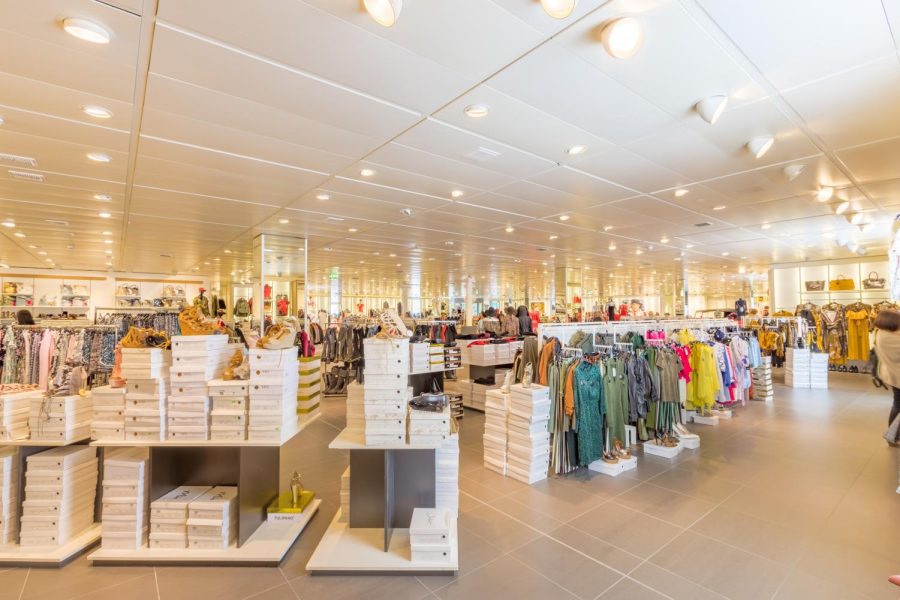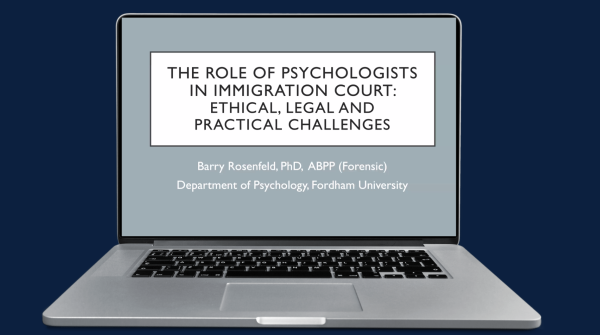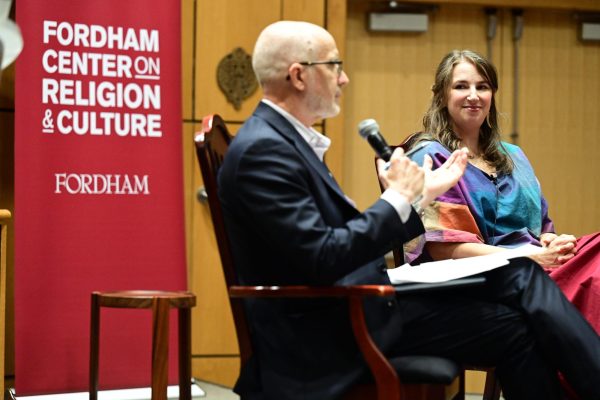Fordham Students and Faculty Advocate for Sustainability in Fashion
Today, the world is inundated with fast fashion. Large quantities of clothing are produced at low prices. Trendiness is often valued over timeliness, and consumer desires are valued over ethical working conditions. In a time where the fashion industry has such vast social and environmental power, the industry’s potential to make a positive impact is immense. In order to harness this power and force the industry to rethink the way they conduct business, Cara Smyth, a current Gabelli Fellow, founded the Responsible Business Coalition (RBC).
The RBC is an incubator for actionable business solutions that drive profitability and sustainability and allow the fashion industry to move collectively toward a great impact.
The RBC came on the heels of the 2013 Rana Plaza collapse in Bangladesh, said Smyth. This garment factory disaster killed and injured thousands and inspired Smyth to enact social and environmental change in the fashion industry.
“Fashion is widely believed to be responsible for about 20% industrial wastewater and 10% carbon emissions,” said Smyth. “We have about 75% women working throughout our supply chain communities. And therefore the opportunity for fashion to do good is tremendous, particularly because we are hardwired for change. We drive cultural change and reflect cultural change, so that makes fashion quite an interesting instrument and probably different than most other industries because nobody else changes products quite as fast as we do season to season. And so we are, I think, better able to incorporate shifts in behavior in the ways that we operate.”
This recognition of the role that fashion plays in environmental and social issues spurred Smyth to think about how to use fashion to do good. This thinking became the basis for the RBC, she explained.
“So about 10 years ago, we started to talk to some of the CEOs in the industry about where we are on sustainability or what is now considered environmental, social and governance,” explained Smyth. “Would there be a way for CEOs to come together to help them help their companies, and what would happen if we all work collectively and establish the agenda of certain key subjects that we want to work on? So we decided an action agenda with originally a smaller group of 16 CEOs. That group has now grown to 47 CEOs. They represent about 275 brands and round about $400 billion in global turnover. The ripple effect of those CEOs, obviously, is even greater than the numbers that I just shared because of all of the supply chain partners that they have, all of the consumers — they touch all of the employees that they engage.”
The RBC came to Fordham’s Gabelli School of Business in March 2020. The introduction of RBC to Gabelli allowed the coalition to bridge the gap between industry and academia. It also allowed RBC to infuse its ideals into Gabelli’s curriculum to educate students before they go out into the industry and provide them with the toolkit to be the most ethical and informed business leader possible, said Smyth.
“So how do we take all that work that we do externally in the fashion sector and ultimately beyond fashion and bring it back into various curricula actually embedded in [the] syllabus,” said Frank Zambrelli, executive director of RBC at Gabelli.
Sustainable fashion practices are not only taught in the classroom at Fordham. Some students practice these ideals in student-run organizations like Fordham Sustainable Fashion (FSF). FSF Co-President Tara Doherty, FCRH ’23, said she always had a passion for thrift shopping and altering clothing, so she joined FSF. As co-president, Doherty hopes her club will help educate students on fashion’s role in environmental issues.
“I hope people gain perspective about the fashion industry and really all industries that we shop in regularly. Virtually all companies are looking to maximize their profit margin and will give people any product that they will spend money on,” said Doherty. “There are so many different steps to create a piece of clothing and when each step is treated with the bare minimum quality, care and materials, it adds up. Finding clothes that are high quality that come from ethical supply chains definitely takes more work but really is worth it. Basically, I just want to give members the tools to make more conscious decisions and find new ways to look at shopping.”
Doherty is aware that her organization consists of college students who do not always have the means to purchase higher-end clothing, making fast fashion sites more attainable. Doherty warns that although fast fashion might seem cheaper at the moment, in the long term fast fashion can actually be more expensive.
“I would say to really think about what [you] wear and how often,” said Doherty. “There’s pieces in every wardrobe that will be worn 100 times year after year, like a pair of jeans. It’s worth it to spend money on a quality pair of jeans because [you] are going to get a lot of use out of it. Pieces that are trendy or will rip after wearing twice aren’t even worth buying. If you want to get fun pieces, go thrift shopping. The clothes are probably better quality and more timeless than anything [you] were going to buy on a fast fashion website.”
Although becoming more sustainable may seem overwhelming, there are actually simple ways to practice eco-conscious shopping practices in everyday life, explained Smyth.
“Be mindful of what you buy and why you buy it,” she said. “So if you can wear it once, because it’s not good quality, or it’s a print or something that you may not use again, or you don’t know how to donate it at the end of life, think twice about what you buy, why you buy it and what you do. When you no longer want that piece, there’s so many opportunities for resale, refurbish, rental with a lot of different solutions and opportunities to dress today.”
It can be easy to feel small in comparison to an industry as large as fashion, but Zambrelli stressed that the consumer has more power than one might think and that it is important to harness this power to do good. “In business, it’s consumers and investors that are the major market forces and as a consumer, there is really an opportunity to not only sort of force the industry or certainly coach the industry on what your interests are. But change behaviors by changing the way that you buy? The brands will follow you,” said Zambrelli.










































































































































































































